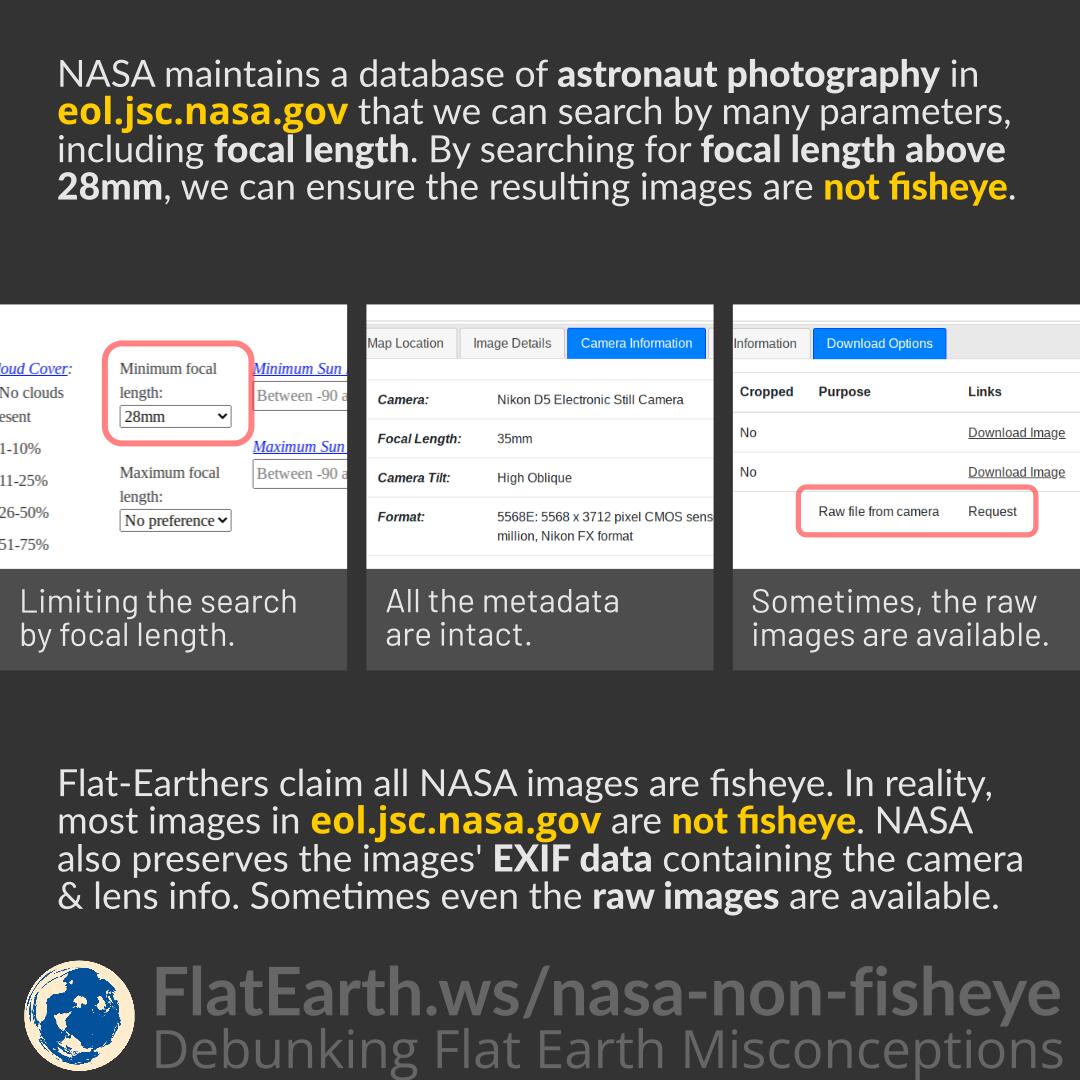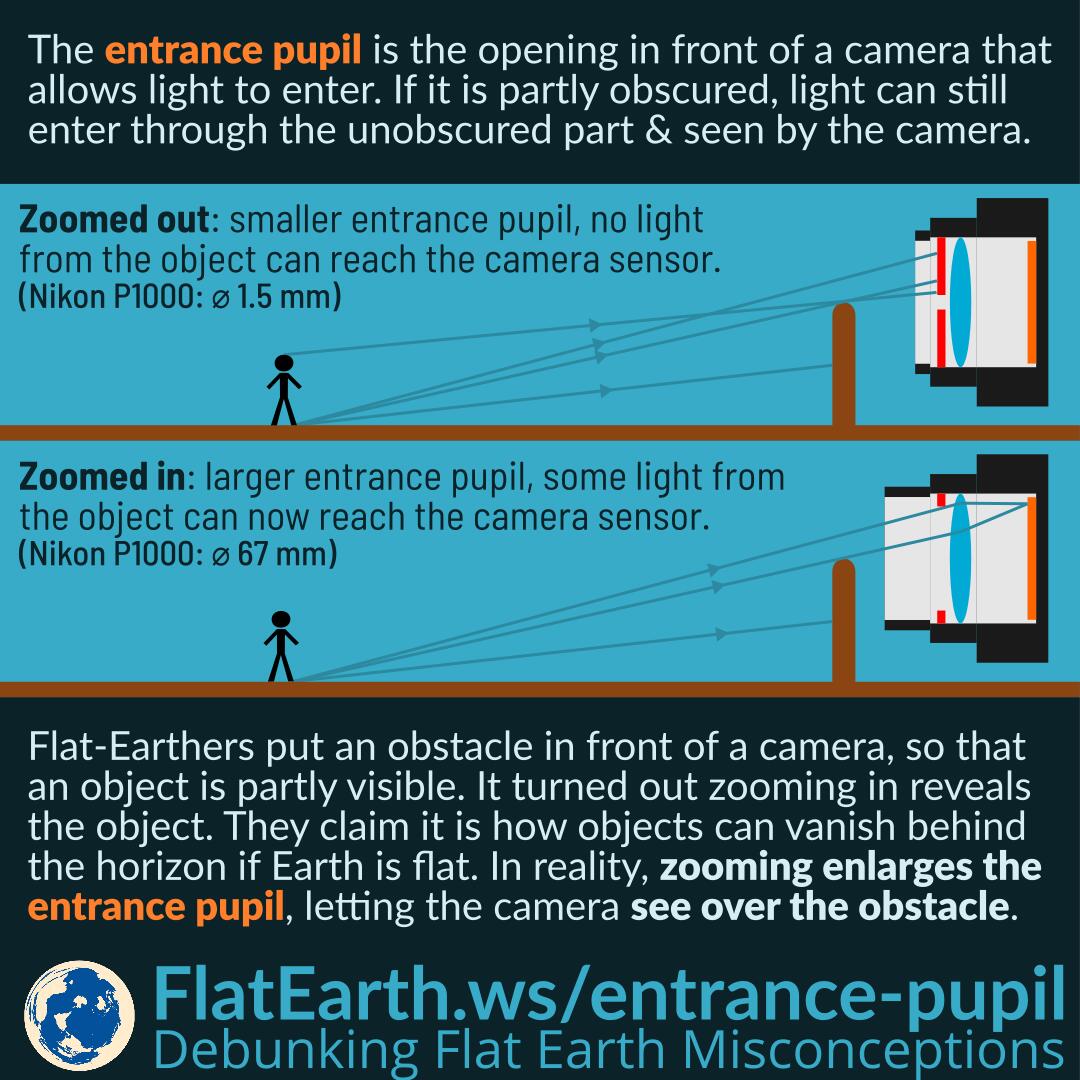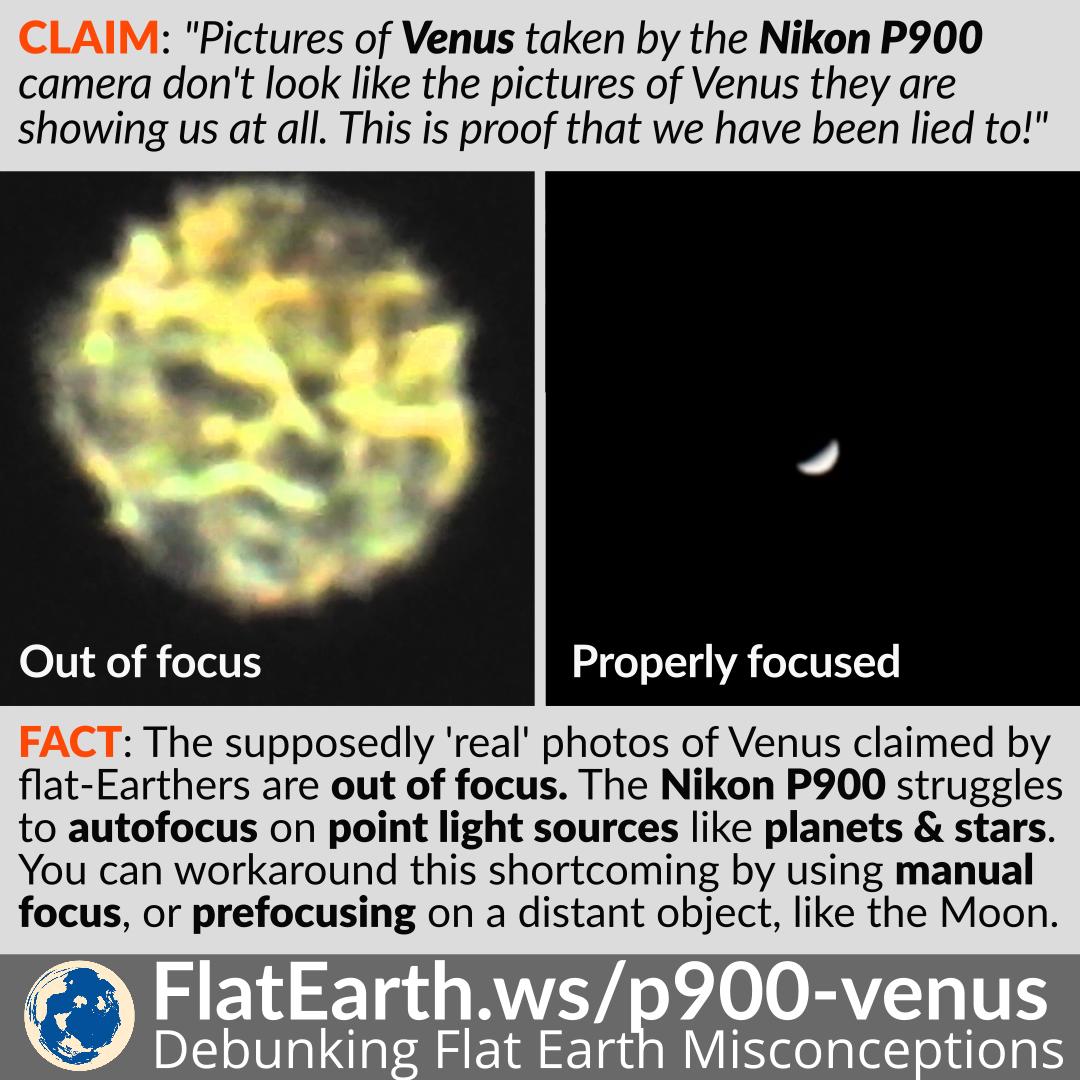NASA maintains a database of astronaut photography in eol.jsc.nasa.gov that we can search by many parameters, including focal length. By searching for focal length above 28mm, we can ensure the resulting images are not fisheye.
Flat-Earthers claim all NASA images are fisheye. In reality, most images in eol.jsc.nasa.gov are not fisheye. NASA also preserves the images’ EXIF data containing the camera & lens info. Sometimes even the raw images are available.







